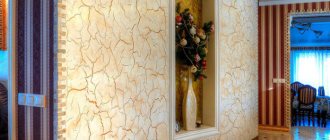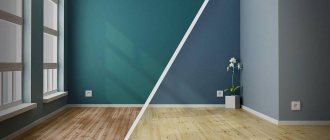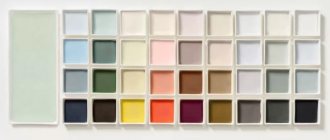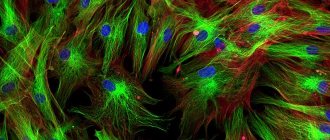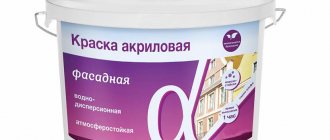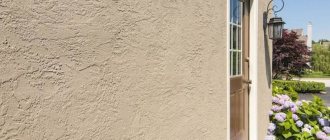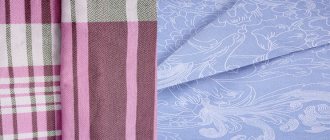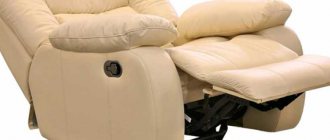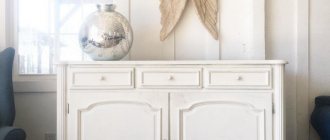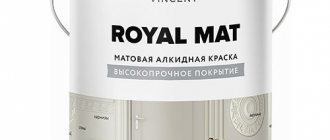Nowadays, experts increasingly recommend using water-based paint for exterior and interior finishing work. Compared to other paints and varnishes, it is easier to work with, and it does not leave an unpleasant odor. You can find out what water-based paint is by familiarizing yourself with its composition.
What is the paint made of?
The main composition is represented by tiny grains of polymers suspended in an aqueous environment. Depending on the manufacturer, water-based paint may contain a large number of additives - from 10 to 15, namely:
- defoamers that reduce foam formation;
- antifreeze - they prevent freezing;
- thickeners;
- corrosion inhibitors;
- antiseptics;
- plasticizers;
- additives that increase the viscosity of the structure;
- preservatives and so on.
In percentage terms, the composition of water-based paint is as follows: foaming agent dissolved in water 50%, pigments and filler - 37%, plasticizer - 7%, and the remaining percentages include other additives.
Popular manufacturers
In modern construction stores you can find a wide selection of different brands. Depending on the volume and type, water-based paint is produced in cans and ordinary buckets of various capacities - from one liter to forty kilograms. Some of the most successful manufacturers include:
- "Tikkurilla " A famous Finnish brand that has been one of the market leaders for many years. Painting with Tikkurilla water-based paint guarantees the quality of painting work and the durability of the coating.
- "Dufa " German enamels from one of the largest European concerns for the production of paint and varnish coatings. Dufa black matte water-based paint is one of the most popular in its segment.
- "Aura" . A reliable Russian manufacturer that produces a wide range of paints with different effects, including water-based and deep matte.
- "Marshal" . has been operating on the Russian market for more than twenty years, offering water-based paints for metal, as well as for wood and mineral coatings.
- Dulux . One of the most famous English developments is the “Magic White” ceiling enamel. Its peculiarity is that after painting the ceiling with emulsion paint, the drying composition turns from pink to white, allowing you to reliably check the absence of untreated areas and telling you what else needs to be done.
- "PARADE" . Eco-friendly paints have received a certificate for use in children's and medical institutions, which confirms their safety.
- "Pufas" . The main emphasis in the German company's product line is super-glossy and matte white and black water-based paints, which are suitable for interior work in any room.
- "Rainbow" . One of the most loyal, in terms of price, manufacturers is the Russian one, which produces high-quality products accessible to the mass consumer.
- "Vincent " Vincent interior paints are in demand both in the domestic and foreign markets for painting and construction work.
Production technology
The production process of water-based paint consists of several stages. At the first stage, the aqueous solution of the polymer dispersion is combined and thoroughly mixed with fillers and pigments. This mixture is in the form of a paste that is dispersed.
The next stage is to add the necessary additives, as a result of which the output is water-based paint that meets all standards.
At the final stage, the finished product is filtered through mesh filters and packaged in containers. Work on the production of water-based interior paint must be carried out in rooms where the air temperature does not fall below +5°C.
Advantages
High-quality paints based on water emulsions have a lot of positive properties. First of all, this refers to their harmless composition, which means that it will not harm human health.
The water-based emulsion is characterized by the absence of a sharp specific odor and quick drying. Consumers are often interested in how long it takes for water-based paint to dry; professionals say that in some cases this requires about 2 hours. It is possible to apply this paint coating using a unique method - electrodeposition.
The composition allows you to make the color of water-based paint different by adding special pigments. The store has a catalog with shades, and the client can choose any one he likes, and a specialist will prepare the paint material of the desired shade on the spot. Although white water-based paint is most often available on sale. Other advantages are:
- ease of application;
- ease of cleaning tools after painting.
Water-based paints retain their original appearance for a long period without cracking or delamination during use. The main disadvantage is the need to carry out work exclusively at a temperature of +5°C.
Application Tips
After selecting the coloring pigment, you can begin coloring. It is recommended to use a sprayer for this; due to the homogeneous consistency of the solution, it is evenly distributed with a spray gun over the surface of the wall or ceiling. However, you can also use a regular roller. It is recommended to paint hard-to-reach places with a brush, which will ensure neatness and cleanliness of the work. You must first prepare the solution. To do this, stir it thoroughly with a construction mixer, which prevents liquid separation, which reduces the technical characteristics of the composition. If necessary, add additional pigments at this stage to change the color scheme of the paint. However, be careful - it is recommended to add pigment gradually to prevent the shade from becoming too saturated. Next, the technology for painting walls, floors or ceilings is standard:
- Prepare the surface. To do this, eliminate all flaws - if necessary, use putty to eliminate depressions. Sand the wall or floors until smooth.
- Apply primer. To do this, use a roller or brush. It is recommended to apply it in two layers, waiting 20-40 minutes between them, which depends on the quality of the primer and the density of its application.
- Cover the baseboards with masking tape to prevent them from being damaged when using a spray gun or roller. You can make two rows of tape to secure the other covering.
- After preparing the paint, apply the first coat. When renovating indoors, prevent the possibility of drafts.
- After an hour, apply a second layer of pigment, filling in the gaps and evening out the coating.
- Remove masking tape from baseboards.
Please note: Acrylic paints for painting metal
As a standard, two layers of acrylic-based water-based paint are applied. However, you can do more, but you need to wait two to four hours before applying each subsequent layer. Do not apply too many layers to maintain the quality of the coating. If you are renovating a room in which water-based paint was applied to the walls, you can additionally cover it with acrylic paint on top. However, this must be done carefully - first check the condition of the coating to see if there are any flaws, depressions, cracks, or chips on it. And check whether the type of acrylic dye is suitable for the previous layer, since the new coating will not always remain in the same condition for a long time. However, it is better to completely remove the previous repair, clean the walls and repaint them with an improved solution. The result will last longer, and it will look neater.
Before painting the ceiling, it is necessary to remove the old coating and putty
Ceiling priming process
Surface painting process
Acrylic paints
Types of water-based paints differ because they have different polymers included in the composition. There are several main types:
- acrylic;
- silicate;
- silicone;
- polyvinyl acetate;
- mineral.
Acrylic resins are added to the acrylic composition, thanks to which the finished product becomes resistant to water. After painting with water-based paint, the surface can be washed; this does not lead to its washing off. It contains latex. It helps eliminate minor cracks in ceilings and walls. They become even and smooth. However, it must be borne in mind that this can be achieved after applying at least 2 layers. Acrylic compounds adhere perfectly to materials such as:
- glass;
- tree;
- brick;
- stone;
- concrete.
A high degree of adhesion is also observed in relation to metal, which must first be primed. Drying time is several hours. The result is a plastic film that perfectly protects the surface from the influence of the external environment. Acrylic compounds last a long time and at the same time:
- do not crack;
- don't burn out.
Acrylic composition is not recommended for painting wet surfaces.
How to paint a ceiling
It is very important to distribute all the paint evenly over the entire ceiling area. The roller is covered with one layer, rolled out onto a patch, and then onto a pre-prepared sheet of linoleum (you can take any similar material). If you start painting the ceiling right away, everything will turn out uneven, even if you use white paint. And after a while, stains will appear that are very difficult to get rid of.
The paint is also applied in parallel lines that slightly overlap each other. One layer is applied within half an hour, for an ideal result you will need 3 layers. The thinner they are, the better and more even the color of the ceiling will be after drying).
The final layer should be directed towards the light. This trick will help hide any unevenness in the color of the ceiling. After applying the main part, you can proceed to areas where the bleached roller could not reach (use a brush).
Silicate water-based paints
Silicate water-based paints are a mixture of an aqueous solution, which includes:
- liquid glass;
- colored pigments.
These components give this material good resistance to atmospheric changes. However, it must be taken into account that it is not recommended to be used for interior work in wet areas. Otherwise, the coating may well be damaged.
If all recommendations are followed, the service life is at least 20 years, suitable for application to surfaces located both inside and outside. Silicate compounds are able to pass steam without trapping air, but they do not protect walls well from moisture. They are recommended for use in buildings where there is unstable groundwater.
Useful nuances
- Manufacturers indicate approximate consumption on the packaging, which is valid only in the case of an ideally prepared surface and at optimal temperature conditions. When tinting the paint, it is recommended to take 10% more base than was obtained in the calculations: if the tone turns out to be too light, you can always add a little more color.
There are generally accepted approximate data on the consumption of compositions, but they strongly depend on the level of absorption of the base, so paint should be taken with a margin of at least 10%. - Don't choose materials that are too cheap. Components for manufacturing are imported from European countries, so their prices are stable for any manufacturer. The cost of products can only be reduced by using low-quality ingredients, which will ultimately affect the appearance and durability of the coating.
- Water-based compositions can only be stored at temperatures above zero, otherwise the water will freeze, and after defrosting the material will lose all its benefits. Coloring can only be done at temperatures above 5 degrees Celsius. At lower temperatures, the composition becomes too thick, making it difficult to distribute over the surface.
- When purchasing paint for wooden surfaces, it is recommended to purchase sandpaper at the same time, since the coating requires sanding after drying.
- Titanium dioxide is considered the best white for such material. High-quality compositions are distinguished by an even white color.
- When choosing water-based paint, it is also important to pay attention to the supplier. You should not buy such products on the market, since in such places you can rarely find premises with the correct storage conditions. It is also recommended to first search for reviews about a potential seller online, and check for quality certificates before purchasing. These documents have a validity period, which is also very important to pay attention to in order to avoid purchasing a fake.
Silicone paints and varnishes
To find out which water-based paint is better, a more detailed acquaintance with the characteristics of each of its types will help. Silicone paints contain silicone resins. They combine the characteristics of both silicate and acrylic paints. The cost of this paint and varnish material is quite high. It can be used to paint all mineral coatings, and 2 mm cracks are perfectly covered.
This waterproof paint is vapor permeable. It is used to paint damp surfaces and those that are exposed to moisture, which makes it impossible for fungus to appear on it for a long time. Due to this property, this washable paint is used in hospitals and laboratories.
Preparing walls before painting
It is necessary that the paint adheres well to the surface, and for this it must be carefully prepared. Remove all uneven surfaces, seal cracks, and clean the surface to be prepared from dust and dirt.
Wall cleaning
- Remove the old coating using a spatula or a stiff brush. If the wall is whitewashed, then it is moistened with water and all remnants of whitewash are washed off with a sponge and brush.
- Oil paint must be removed. This coating is heated with a hair dryer to soften it and scraped off with a spatula and brush.
To clean walls from any decorative coating and old paint, one of three methods is used:
- Mechanical;
- Thermal;
- Chemical.
Note! Oil-based paint coating is incompatible with water-based compositions, so it will have to be removed in any case. If the old paint is enamel, you can leave it, but prime the surface with drying oil.
Sealing cracks
After the walls are cleaned, all cracks in the coating must be repaired before painting. If this is not done, it will not be possible to obtain a high-quality new coating and new cracks will appear on the painted surface very quickly.
We slightly widen all the cracks to fill them with putty using a spatula. Next, we clean the cracks from dust and apply a primer and give it time to dry.
The next step is to seal the cracks with putty or some kind of polymer (for example, silicone sealant). After drying, clean with fine sandpaper and remove dust.
Water-based polyvinyl acetate paint
This type of paint and varnish material is the most inexpensive, but is of high quality, which is the reason for its popularity. It is made on the basis of PVA. Used exclusively for painting ceilings and walls indoors. The main positive properties are:
- absence of harmful ingredients;
- complete safety in relation to fires and explosions;
- drying in a short time;
- the possibility of obtaining a matte and glossy effect after adding special substances.
It fits perfectly on a flat surface and is intended for painting:
- wood;
- cardboard;
- plaster and other porous materials.
There are some disadvantages that can make themselves felt if used incorrectly. The main ones are susceptibility to moisture and prohibition of use in wet areas. In this case, it has low resistance.
The technical characteristics must be taken into account before purchasing this type of paint and varnish product. They mean:
- compound;
- specific gravity;
- consumption;
- viscosity;
- best before date;
- storage conditions.
The specific gravity of moisture-resistant water-based paint is approximately 1.35 kg/l. Approximately 150-200 ml/m² is consumed for 1 layer. The number of layers is influenced by the absorption capacity of the base. The viscosity of water-based paint is an indicator that determines the degree of dilution of the coloring composition with water. To measure it there is a viscometer. The following indicator is considered normal when used:
- spray gun - from 20 to 25;
- brushes - from 40 to 45.
Air humidity and temperature affect drying time. It can range from 2 hours to a day. The best temperature, which has a positive effect on painting rooms, is considered to be +20°C, with a humidity of 65%.
According to the requirements, such coloring compositions are intended for performing external and internal work in dry and wet areas. Depending on the purpose it should be used. If you paint wet surfaces with material for dry rooms, it will not last even a few months and vice versa. Equally important when choosing for painting work is appearance.
Manufacturers produce water-based compositions that make the coating:
- matte;
- silky matte;
- glossy.
Matte and silky-matte paint and varnish compositions are well suited for painting wallpaper and ceilings. Matte paint hides the smallest imperfections. But we must keep in mind that these are not resistant to abrasion, which means they are not recommended to be washed frequently.
Even very minor errors become noticeable under the glossy water-based paint after its application. This means that the surface must be thoroughly prepared before application.
How to paint walls correctly
It is recommended that before starting construction work, completely empty the room of unnecessary things, level out all the unevenness of the wall, apply a layer of putty and wash the surface if necessary. Despite the safety of paints, it is better not to forget about a respirator, goggles and protective gloves.
If water-based wall paint is applied to the putty part, then you need to create only three layers, the first of which will be the primer base. When treating a surface with wallpaper, only 2 layers are enough.
It is important that the white emulsion paint is applied in two stages, in neat parallel lines. It is better to move from the window to the far end of the room. To achieve better results, you can use special equipment. The most popular device is the spray gun.
A spray gun for applying emulsion paint is a special device that can paint any wall without any gaps or drips. The devices are characterized by a high level of performance and a large coverage area.
Using water-based paint for interior work may require a regular brush. It is better to choose a wide size - 100 or 250 mm. The brush is immersed in the paint a third of its length, then pressed against the wall of the jar so that all excess liquid flows back. The paint is applied with neat short horizontal or vertical strokes along a trajectory from top to bottom.
Perhaps the simplest and most common tool for applying paint is a roller. However, using it will require more layers because the roller applies the paint too thinly.
The tray is filled about 1/3 with liquid, then the roller is lowered into the paint and rolled back and forth several times to absorb more. This allows the material to be evenly distributed. Next, you can begin the staining process. The roller applies paint to the wall using even movements due to light pressure. It is important to do everything carefully and without haste, so as not to stain or spill anything.
